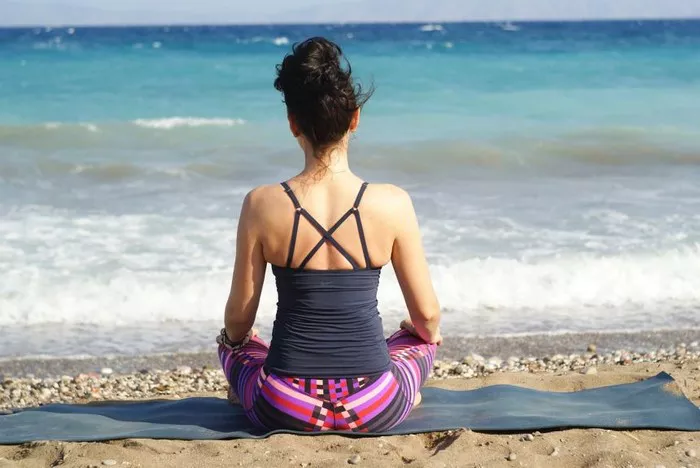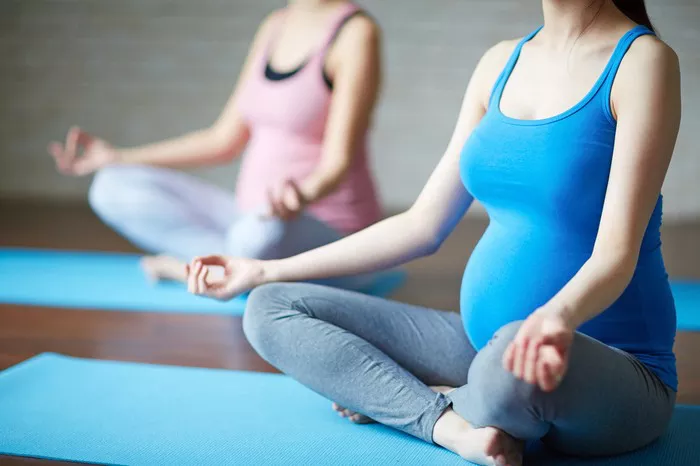Sphinx Pose, or Salamba Bhujangasana, is a gentle yet powerful backbend in yoga that promotes spinal extension, flexibility, and strength. It is a foundational pose in many yoga practices and can serve as an accessible alternative to deeper backbends like Cobra Pose or Bow Pose. Holding Sphinx Pose for a specific amount of time can yield numerous benefits for both your body and mind, but how long should you actually hold it?
This article will explore the duration for holding Sphinx Pose, its benefits, how to properly perform it, and the factors that influence the optimal time for holding the pose. Whether you are a beginner or an experienced yogi, understanding the principles behind this pose and its timing will help you deepen your practice and make the most of this posture.
What is Sphinx Pose?
Sphinx Pose is a reclining backbend where the body is positioned lying on the belly with the elbows directly beneath the shoulders. The forearms are on the ground, and the chest is lifted upward while the lower body remains relaxed and in contact with the mat. The pose resembles the famous Sphinx statues in ancient Egypt, hence the name. The spine extends gently as you engage the muscles along the back, and the chest and heart space open, providing both a physical stretch and an emotional release.
In many yoga styles, Sphinx Pose is used as a preparatory pose for more intense backbends or as a restorative pose for those who seek a more moderate backbend. Unlike deeper backbends, Sphinx Pose is relatively accessible and can be practiced by beginners, though there are still important considerations for optimal execution and duration.
The Benefits of Sphinx Pose
Before we explore how long you should hold Sphinx Pose, it is essential to understand the numerous benefits it provides. Some of the key advantages of practicing Sphinx Pose include:
1. Spinal Extension and Flexibility
Sphinx Pose encourages spinal extension, which can help counteract the effects of prolonged sitting and poor posture. It gently stretches the front of the body, including the chest, abdomen, and hip flexors, while also strengthening the muscles along the back of the body. This extension promotes flexibility and helps to improve spinal health by creating space between the vertebrae.
2. Core Engagement and Strengthening
While Sphinx Pose is often seen as a relaxing posture, it requires significant engagement of the core muscles. This engagement strengthens the abdominals and lower back muscles, which are essential for maintaining good posture and supporting spinal health. Proper core activation also ensures that the lower back doesn’t overextend or compress during the pose.
3. Improved Posture
Regular practice of Sphinx Pose can improve posture by lengthening the spine and opening the chest. This is particularly beneficial for individuals who spend a lot of time hunched over desks or devices, as it helps to reverse the effects of rounded shoulders and slumped posture.
4. Mental Clarity and Focus
Backbends, including Sphinx Pose, can be incredibly grounding and invigorating. By opening the chest and heart space, they also help to release emotional tension. The gentle backbend in Sphinx Pose invites a sense of calm and relaxation, helping to clear the mind and improve focus. It can also help to reduce stress and anxiety when practiced mindfully.
5. Relieving Back Pain
Sphinx Pose can be a therapeutic pose for individuals who suffer from mild to moderate lower back pain. It gently strengthens and lengthens the muscles of the back while also improving posture. However, it is important to perform this pose with proper alignment and technique to avoid exacerbating existing issues.
How Long Should You Hold Sphinx Pose?
The duration for holding Sphinx Pose varies depending on your individual level of experience, flexibility, and goals for the practice. In general, there is no one-size-fits-all answer, but a few key guidelines can help you determine how long you should hold the pose.
1. For Beginners (1-2 minutes)
If you are new to yoga or backbends, holding Sphinx Pose for 1-2 minutes is generally sufficient. Beginners should focus on getting the form right, engaging the core, and breathing deeply throughout the posture. Holding the pose for a short duration allows your body to adjust gradually to the backbend without straining the muscles or overstretching.
For beginners, it is also important to listen to your body and not push too hard. If you feel any discomfort or pain in the lower back, lower the chest slightly or come out of the pose. Over time, as you become more familiar with the pose and build strength, you can gradually extend the duration.
2. For Intermediate Practitioners (2-4 minutes)
Intermediate practitioners, those who have been practicing yoga for several months to years, may find that holding Sphinx Pose for 2-4 minutes offers a deeper stretch and strengthens the back and core muscles more effectively. At this stage, the body is likely accustomed to basic backbends, and holding the pose for a longer period can provide additional benefits for spinal health, posture, and flexibility.
It’s important to maintain mindful breathing and make any adjustments to the alignment if needed. If you find that your lower back is feeling too much pressure, consider engaging the core more and lifting the chest higher while keeping the shoulders relaxed.
3. For Advanced Practitioners (3-5 minutes or more)
Advanced practitioners may choose to hold Sphinx Pose for longer durations, such as 3-5 minutes or more, to deepen their flexibility and strength. Holding the pose for this extended period allows for deeper spinal extension and can enhance the mind-body connection.
For advanced practitioners, it is critical to maintain excellent alignment and avoid hyperextending the back. In this phase of practice, mindfulness is key: focus on the breath, observe the sensations in the body, and remain in the present moment. Holding Sphinx Pose for extended periods can also help release emotional tension and promote a sense of openness and vitality.
Factors That Influence the Duration
The ideal duration for holding Sphinx Pose depends on several factors, which include:
1. Personal Flexibility
Your individual flexibility will significantly impact how long you can hold the pose comfortably. If you are very flexible, you may be able to hold the pose for longer periods. Conversely, if you have limited flexibility, you may need to hold the pose for a shorter duration or use props to support your body.
2. Experience Level
As mentioned earlier, your level of yoga experience plays a crucial role in determining how long you can safely hold Sphinx Pose. Beginners may start with shorter holds and gradually build up as they become more comfortable with the backbend.
3. Body Alignment and Posture
Proper alignment is essential for holding Sphinx Pose for any duration. If your body alignment is incorrect, you may feel discomfort or strain, especially in the lower back. Engaging the core and ensuring the elbows are directly under the shoulders can help to prevent overextension.
4. Breathing and Mindfulness
Breathing deeply and maintaining mindfulness throughout the pose can enhance your experience. If you are breathing deeply and your body feels relaxed, you may be able to hold the pose for a longer time without strain. Conversely, if your breath becomes shallow or you begin to feel tense, it may be time to come out of the pose.
5. Physical Conditions or Injuries
If you have any pre-existing physical conditions, such as back pain, shoulder issues, or spinal problems, you should adjust the duration of your Sphinx Pose practice accordingly. It is important to listen to your body and consult with a healthcare provider or experienced yoga teacher if you are unsure about the right duration for you.
How to Perform Sphinx Pose Correctly
To ensure that you are holding Sphinx Pose in the most effective and safe way, here is a step-by-step guide:
Start on your belly: Lie on your stomach with your legs extended behind you. Keep your feet hip-width apart and the tops of your feet pressing into the mat.
Place your forearms on the floor: Bend your elbows and place your forearms flat on the mat, with your elbows directly under your shoulders. Your palms should be facing down.
Lift your chest: Inhale and gently begin to lift your chest off the ground, engaging the muscles in your back to extend the spine. Avoid collapsing into the lower back—keep the lower ribs in and the navel lightly lifted.
Engage the core: Activate your core muscles to support the spine and avoid excessive compression in the lower back. Make sure your shoulders are relaxed and away from your ears.
Breathe deeply: Focus on steady, deep breaths as you hold the pose. With each inhale, lengthen the spine, and with each exhale, relax into the posture.
Hold the pose: Hold the position for the desired amount of time, maintaining proper alignment and comfort.
Exit the pose: When you are ready, gently lower your chest back to the ground and rest.
Conclusion
The duration for holding Sphinx Pose can vary based on your experience level, goals, and physical condition. Beginners may start with 1-2 minutes, while more experienced practitioners may hold the pose for up to 5 minutes or longer. Regardless of your practice level, it is essential to listen to your body, maintain proper alignment, and breathe deeply throughout the pose. By practicing Sphinx Pose regularly, you can enhance spinal flexibility, strengthen your core, improve posture, and relieve back pain. Most importantly, remember that yoga is not about the length of time you hold a pose but the quality of the experience and the connection between mind, body, and breath.
Related Topics:






















